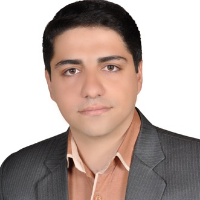Optimization of artificial neural network structure by using genetic algorithm for predicting dehydration process parameters by osmosis-ultrasound method from kiwifruit
One of the most important applications of artificial neural networks is to design a model based on which the value of one or more dependent variables can be predicted using independent variables. A genetic algorithm is one of the methods for optimizing problems and models, based on natural selection and some essential concepts of genetics. The performance of artificial neural networks (ANN) was reported by some researchers. They said that these approaches can estimate the characteristics of various fruits and vegetables with high precision. It has been shown that nonlinear techniques based on ANN are far better in generalization and estimation than empirical models. Determination of the best number of neurons in hidden layers of ANN models is generally carried out by trial and error. The genetic algorithm optimization method can be used to overcome this inherent limitation of ANN (Hafezi et al. 2020; Amini et al. 2021; Satorabi et al. 2021). Osmotic dehydration is an easy method for removing water from fruit and vegetable particles. At the same time, the correct term is “osmotic dewatering” while the final product still has high water content (Salehi et al. 2015). Ultrasound (sonication) treatments support the removal of intracellular water from fruit or vegetable particles to the surroundings as a result of a quick series mechanism of compressions and expansions (the phenomenon of cavitation). The use of continuous high-frequency ultrasound improves the mass transport rate during osmo-concentration. Also, the reduction of dehydration time and, as a result, processing costs have lately been reported at the laboratory scale after research conducted on some fruit and vegetable particles (Fernandes et al., 2008; Awad et al., 2012; Mohsen et al., 2017; Azarpazhooh et al., 2019; Salehi, 2020b; Salehi et al., 2022). In this study, the genetic algorithm-artificial neural network method was used to predict the weight reduction percentage, water loss percentage, solids gain percentage and rehydration percentage of kiwifruit slices dehydrated by the osmosis-ultrasound way.
Fresh kiwifruits of the Actinidia deliciosa variety were harvested in a patch located in Sari, Mazandaran Province, Iran. Before the experiments, the fresh and uniform-size kiwifruits with no external damage were selected, and with the aid of an industrial slicer (Girmi, Italy), cut into 0.5 cm thickness slices. The fresh kiwifruit slices moisture content (MC) was 84% w.b. (was calculated at 105°C for four hours, in an air forced oven, Shimaz, Iran). The ultrasonic treatments were carried out using an ultrasonic bath. The operating frequency of the bath was 40 kHz. The temperature of the osmotic solutions was maintained at 50°C. Treatments were structured in combinations of 8 time intervals: 10, 20, 30, 40, 50, 60, 70, and 80 min; three osmotic solutions concentrations: 20, 30, and 40 °Brix; and three sonication power levels: 0, 75, and 150 watts. Treatments performed at 0 W were not subjected to sonication and were considered as control samples. The osmotic solutions were prepared by adding food-grade sucrose to water until concentrations of 20, 30, and 40 °Brix (% w/w) were attained. Each kiwifruit slice was immersed in the ultrasonic bath filled with 4L of treatment solution. Neurosolution software (version 5, NeuroDimension, Inc., USA) was employed for making the genetic algorithm–artificial neural network (GA-ANN) model. In the hidden layers and output layer a hyperbolic tangent activation function was used. The Levenberg–Marquardt optimization method was applied to network training. The crossover probability and the mutation probability operators were adjusted equal to 0.9 and 0.01, respectively. Also, a sensitivity analysis was done to supply the measure of relative significance between the inputs of the ANN model and to show how the model output changed in response to input changes. Genetic algorithm structure-artificial neural network with three inputs of ultrasound treatment time (in eight times of 10, 20, 30, 40, 50, 60, 70 and 80 minutes), sucrose solution concentration (in three levels of 20, 30 and 40 °Brix) and ultrasound power (at three levels of 0, 75 and 150 watts) was developed to predict the characteristics of dehydrated kiwifruit slices.
It was considered that the weight reduction of kiwifruit slices increased with the enhancement in sonication powers. Also, it was observed that weight reduction increased with the enhancement in osmotic solution concentration from 20% to 40%. With increasing the ultrasonic power to 150 W, the average moisture loss percentage of the samples increased by 27.51% (P<0.05). With increasing the osmotic solution concentration from 20 to 40%, the average moisture loss percentage in the samples increased significantly from 16.58% to 35.33% (P<0.05). The results of modeling showed that a network with eight neurons in a hidden layer and using the hyperbolic tangent activation function could predict the dehydration process parameters of kiwifruit slices. The values of coefficients of determination (r) calculated to indicate the weight reduction percentage, water loss percentage, solids gain percentage and rehydration percentage of kiwifruit slices dehydrated using the genetic algorithm-artificial neural network method were 0.983, 0.989, 0.992 and 0.979, respectively.
Based on the results of the sensitivity analysis test, the rehydration parameter was the most sensitive parameter to changes in osmotic solution concentration and increasing the ultrasonic treatment time. The results obtained from this method show that the genetic algorithm-artificial neural network method is a suitable solution for modeling the kiwifruit dehydration process by the osmosis-ultrasound technique.
- حق عضویت دریافتی صرف حمایت از نشریات عضو و نگهداری، تکمیل و توسعه مگیران میشود.
- پرداخت حق اشتراک و دانلود مقالات اجازه بازنشر آن در سایر رسانههای چاپی و دیجیتال را به کاربر نمیدهد.



